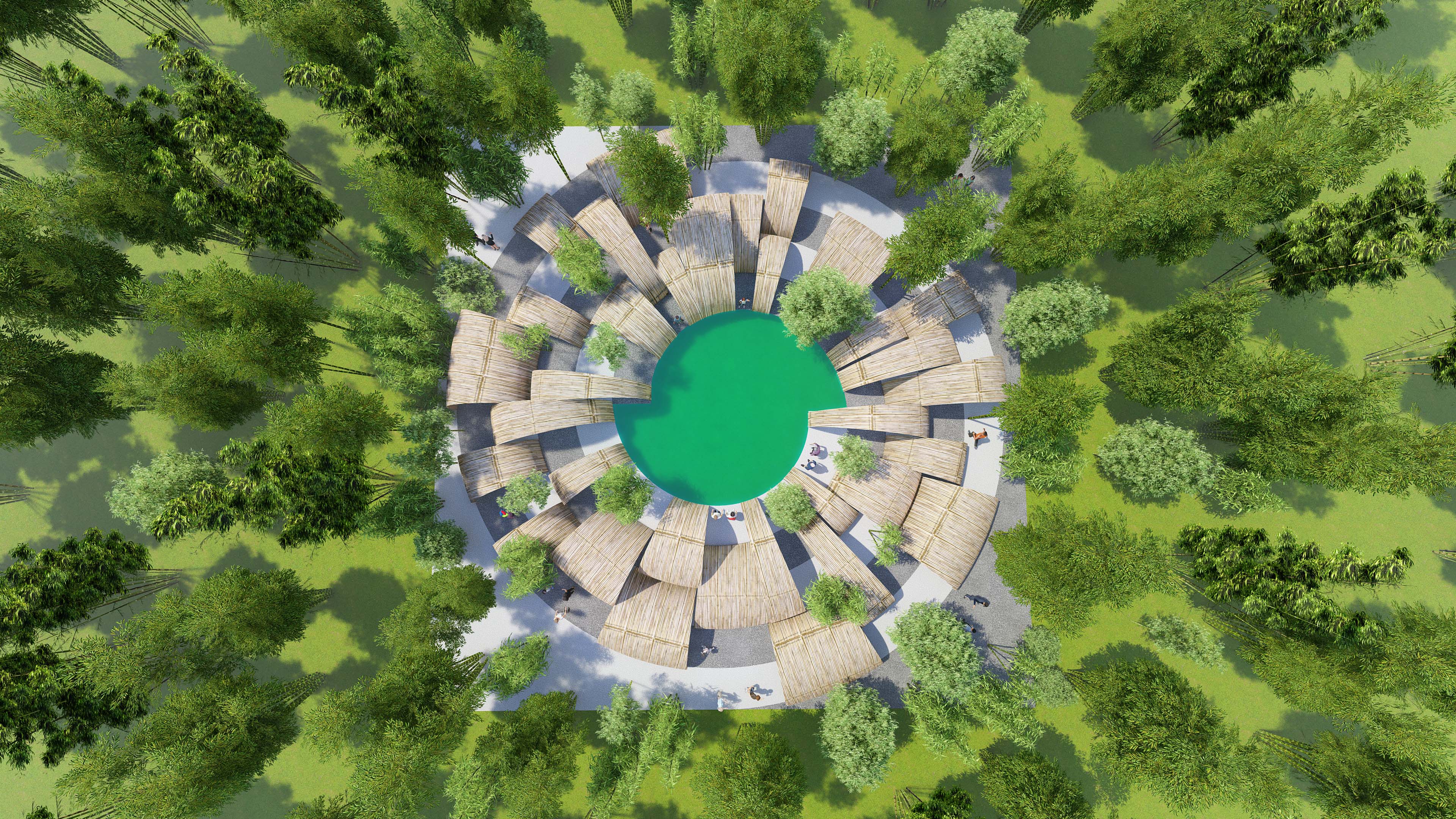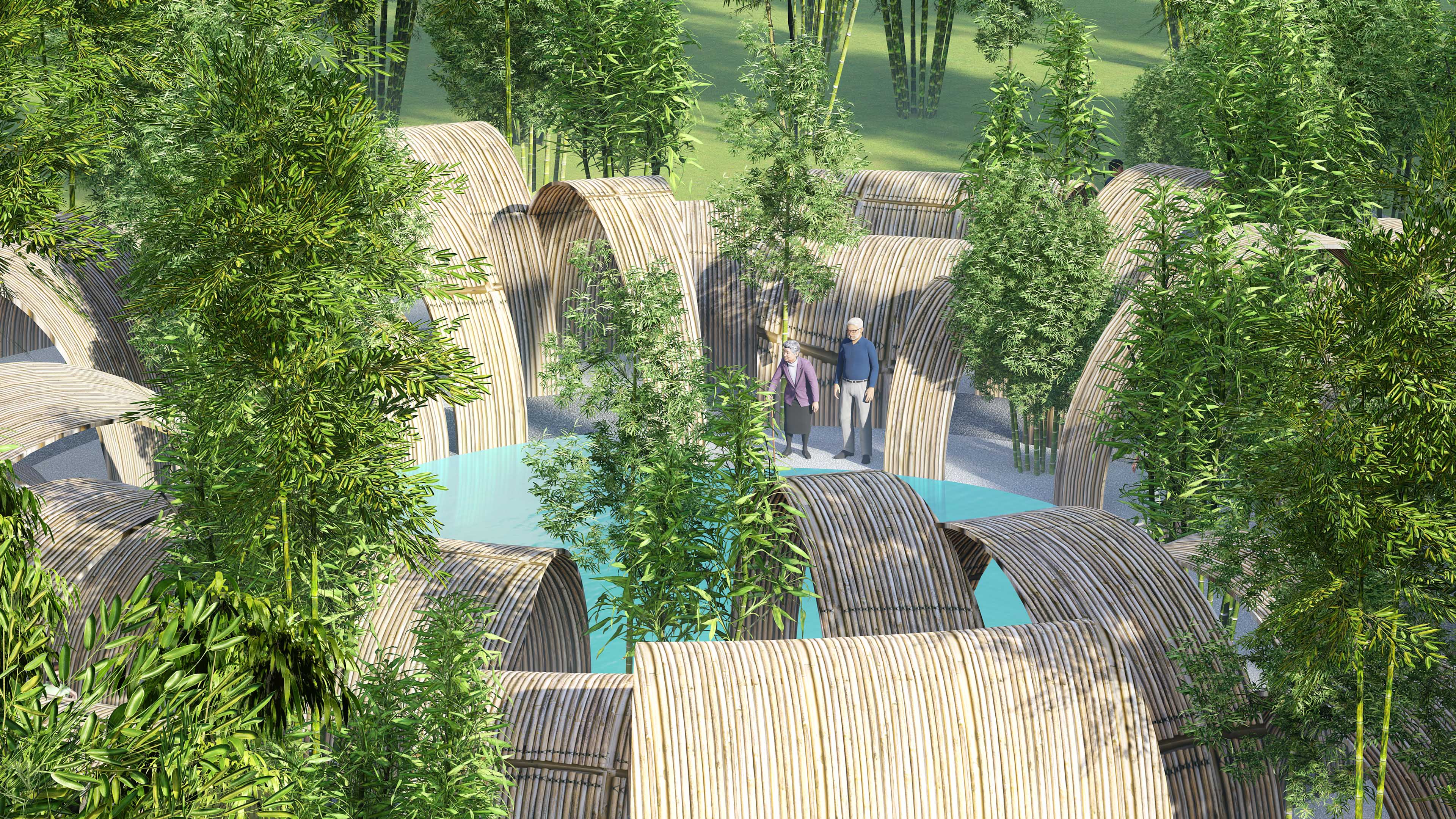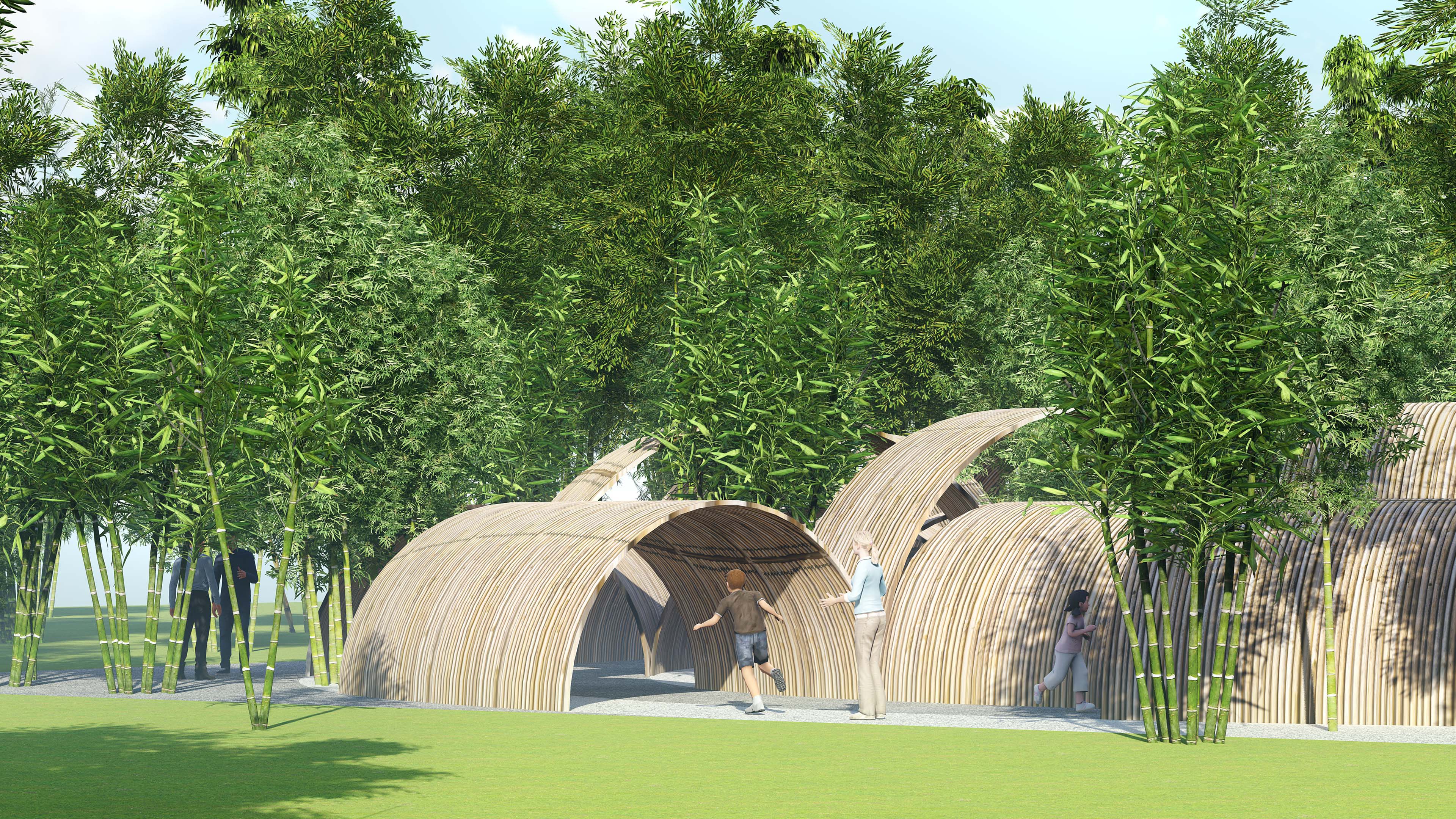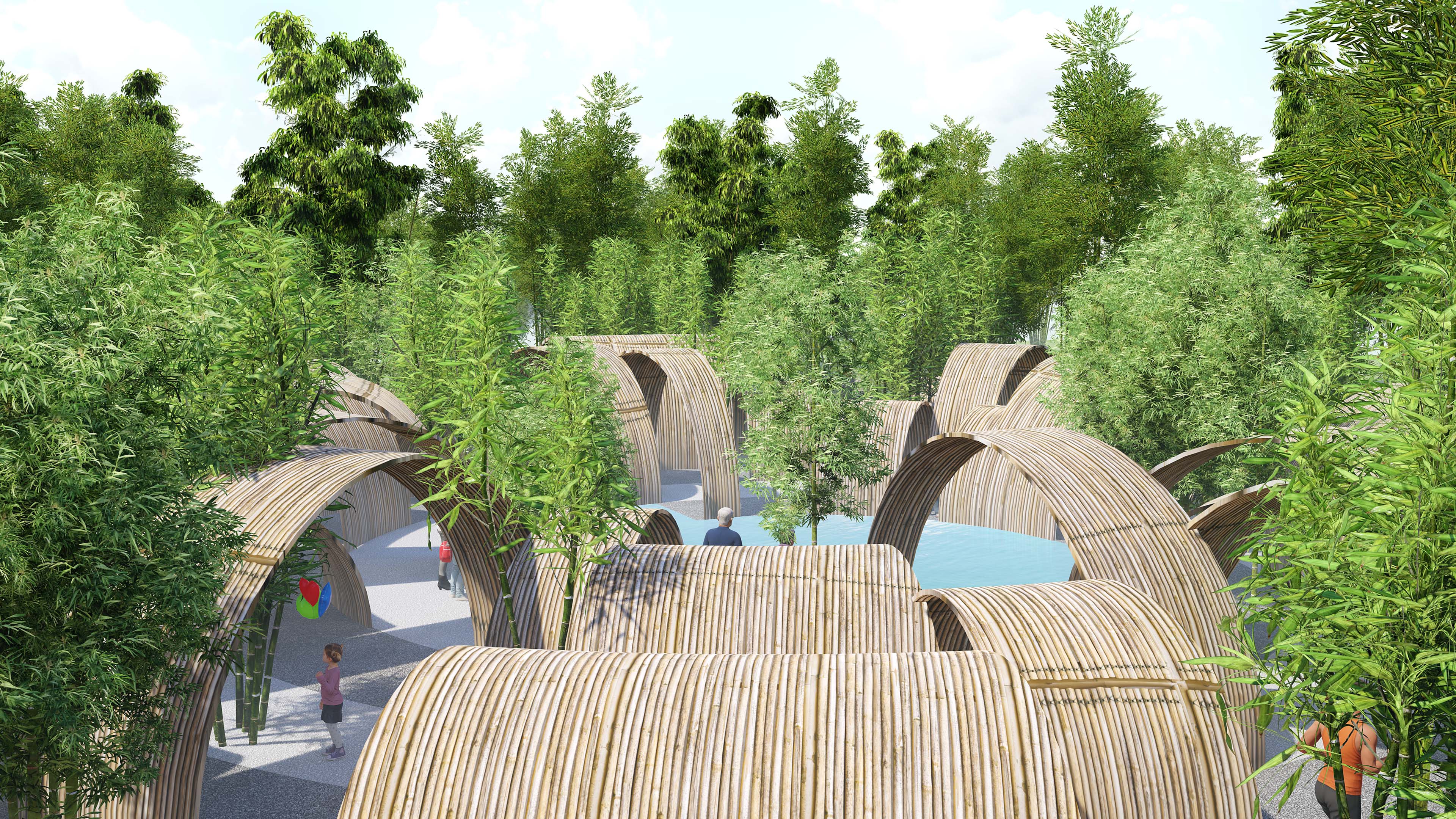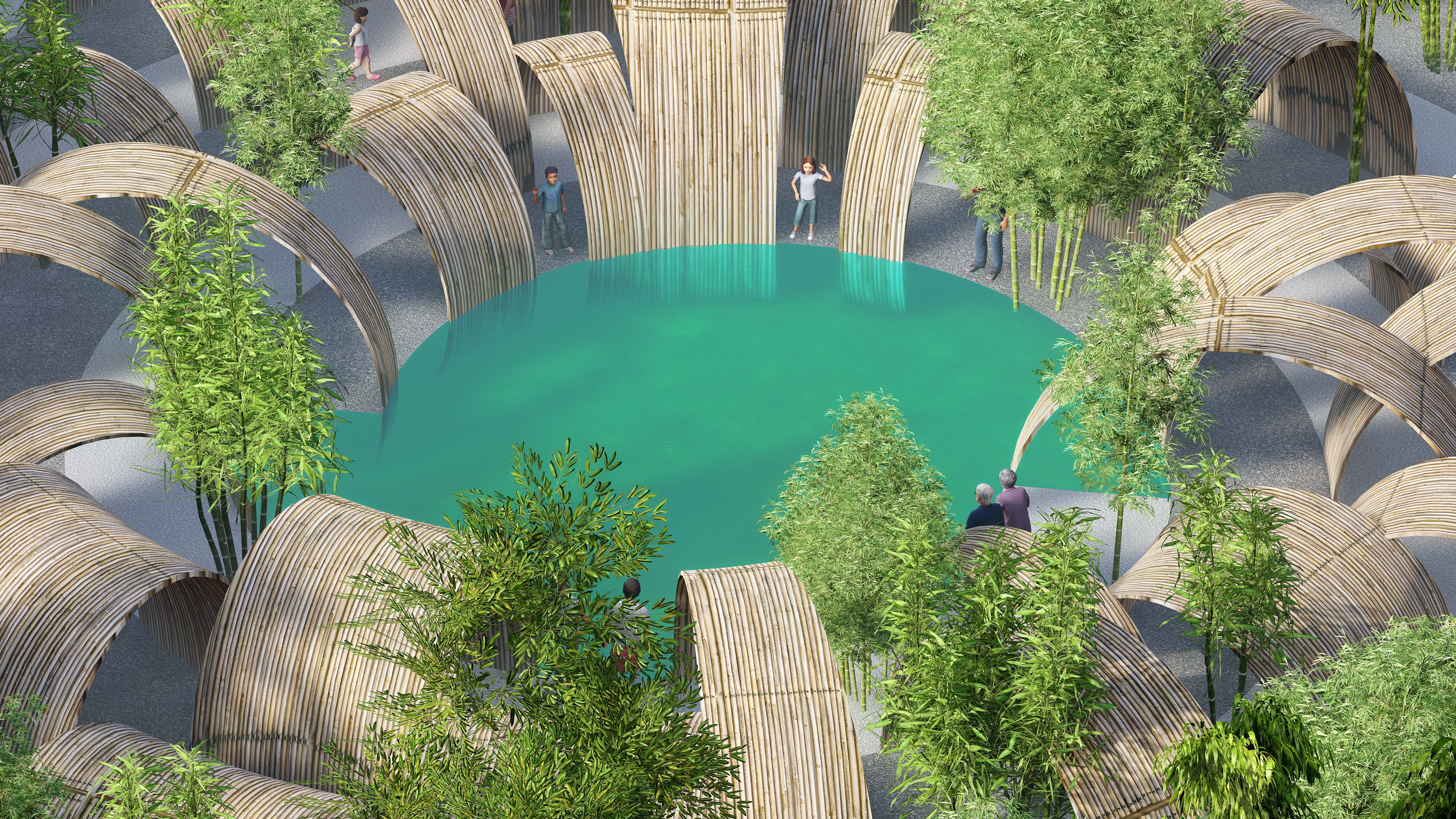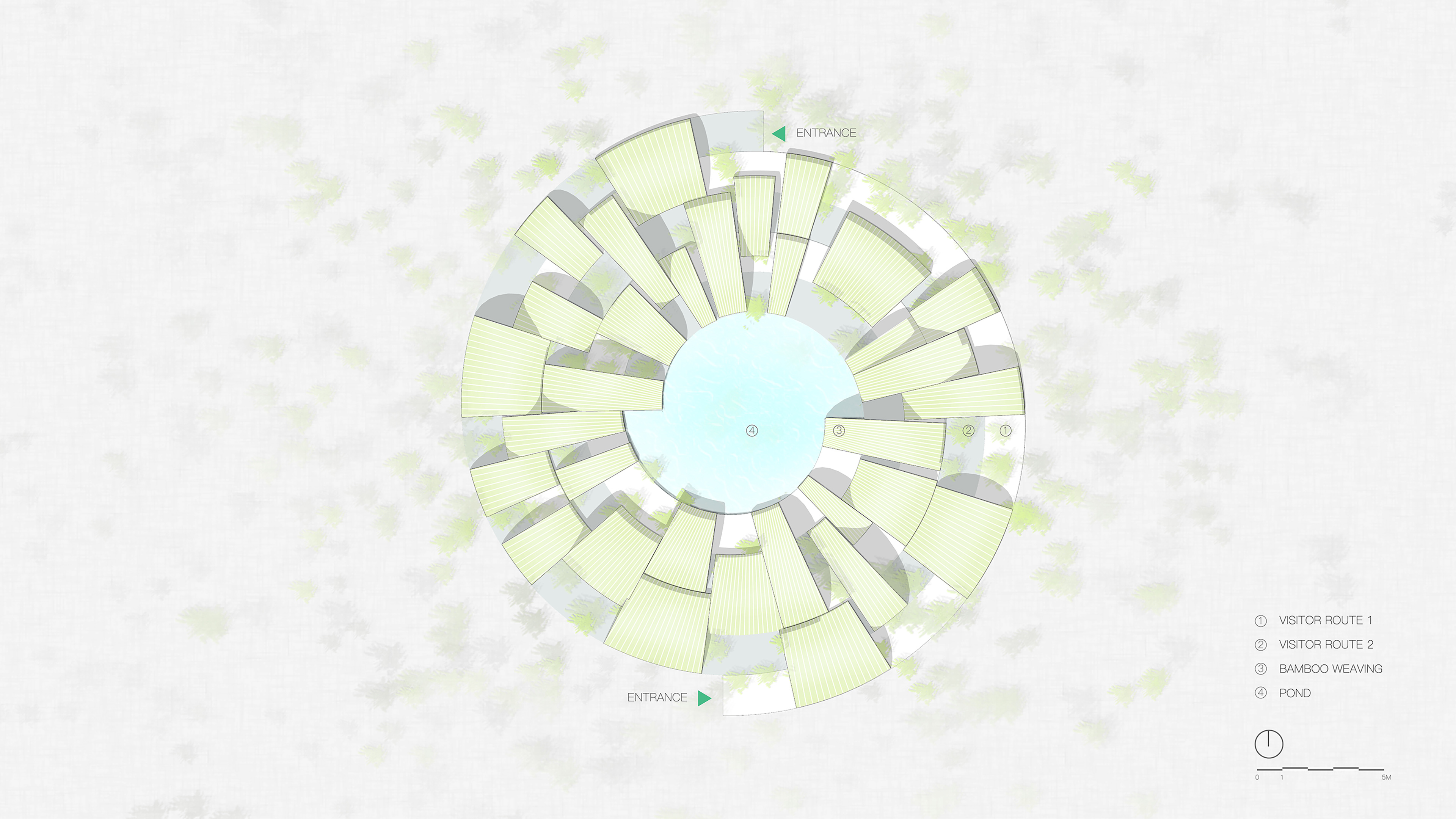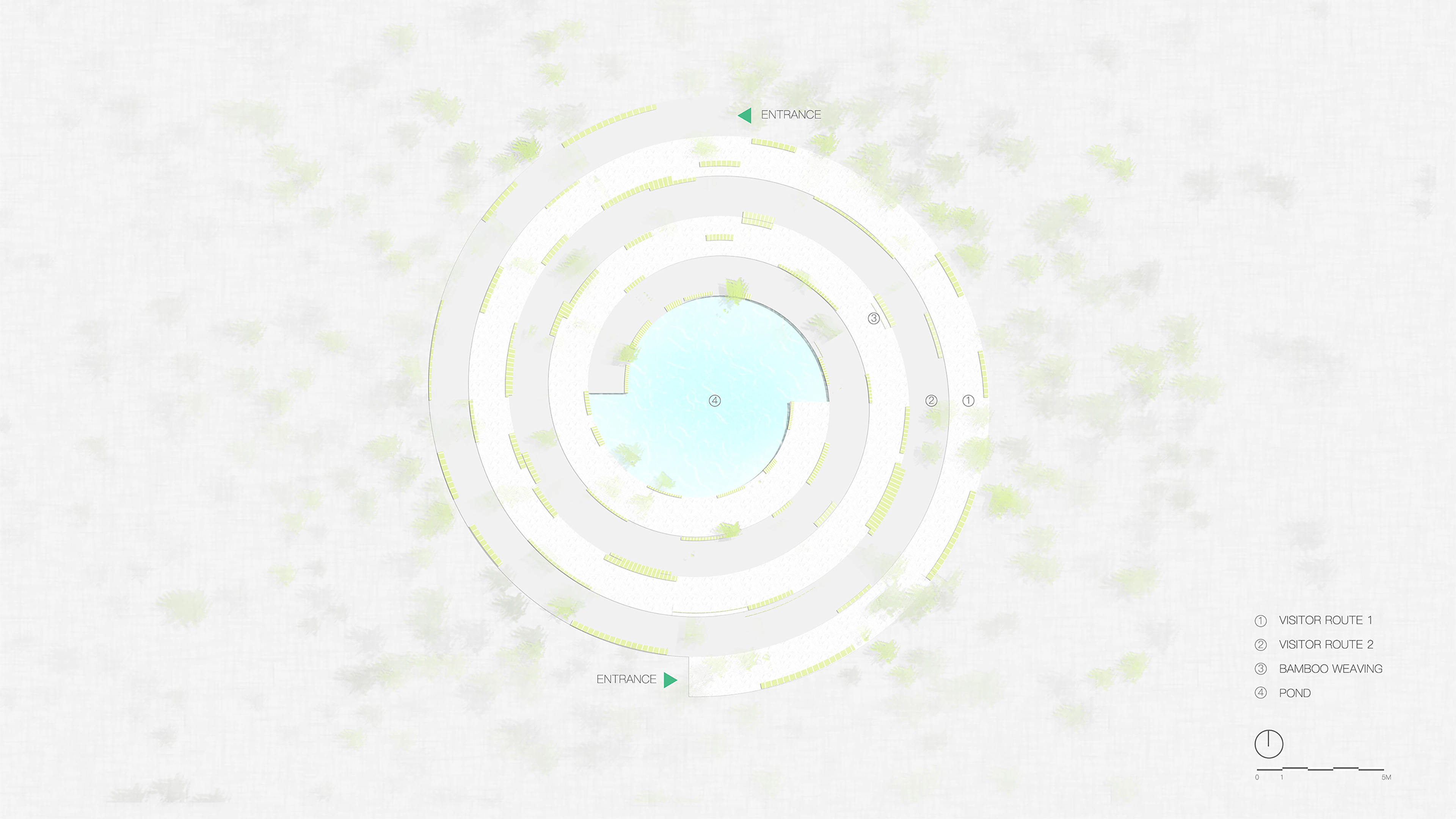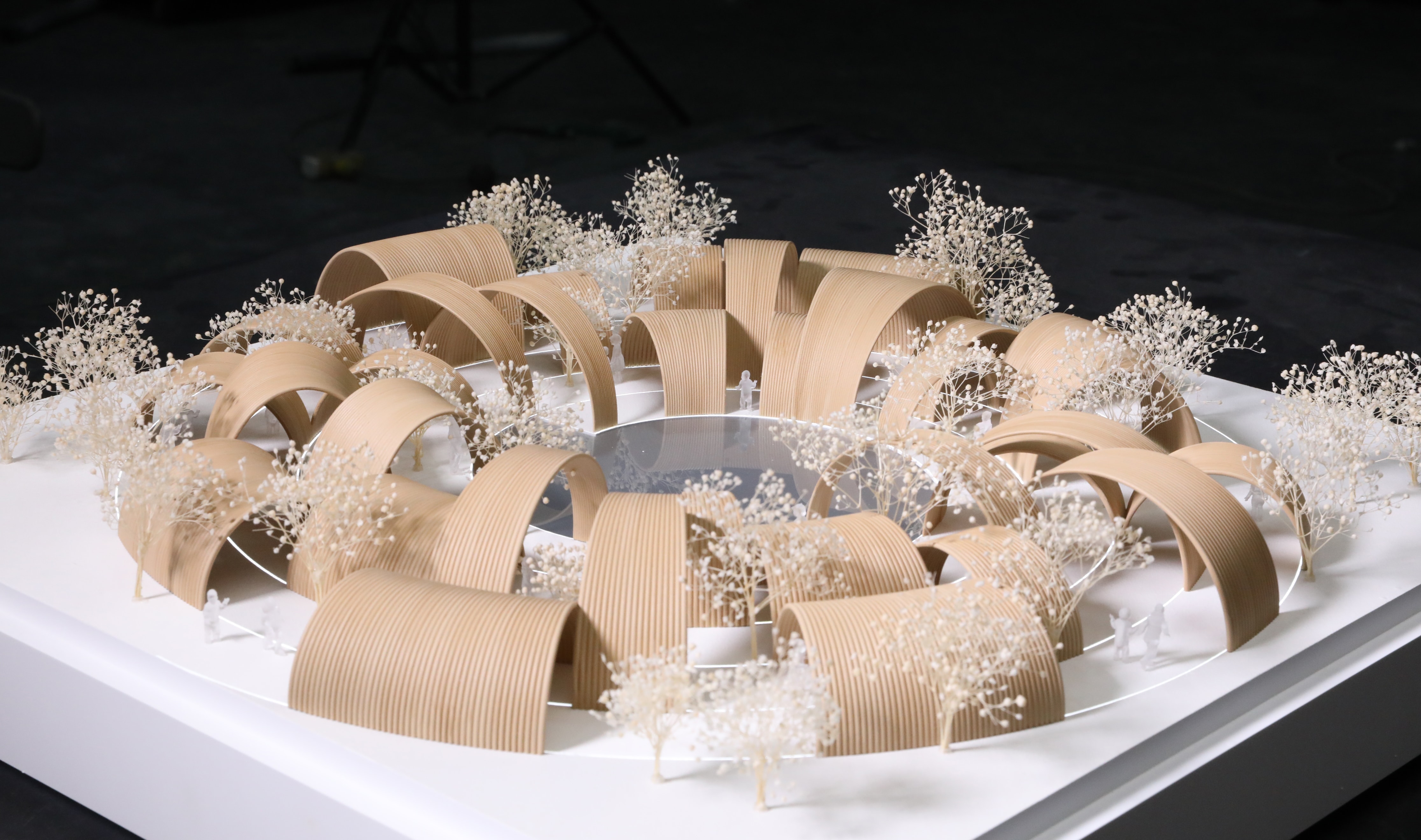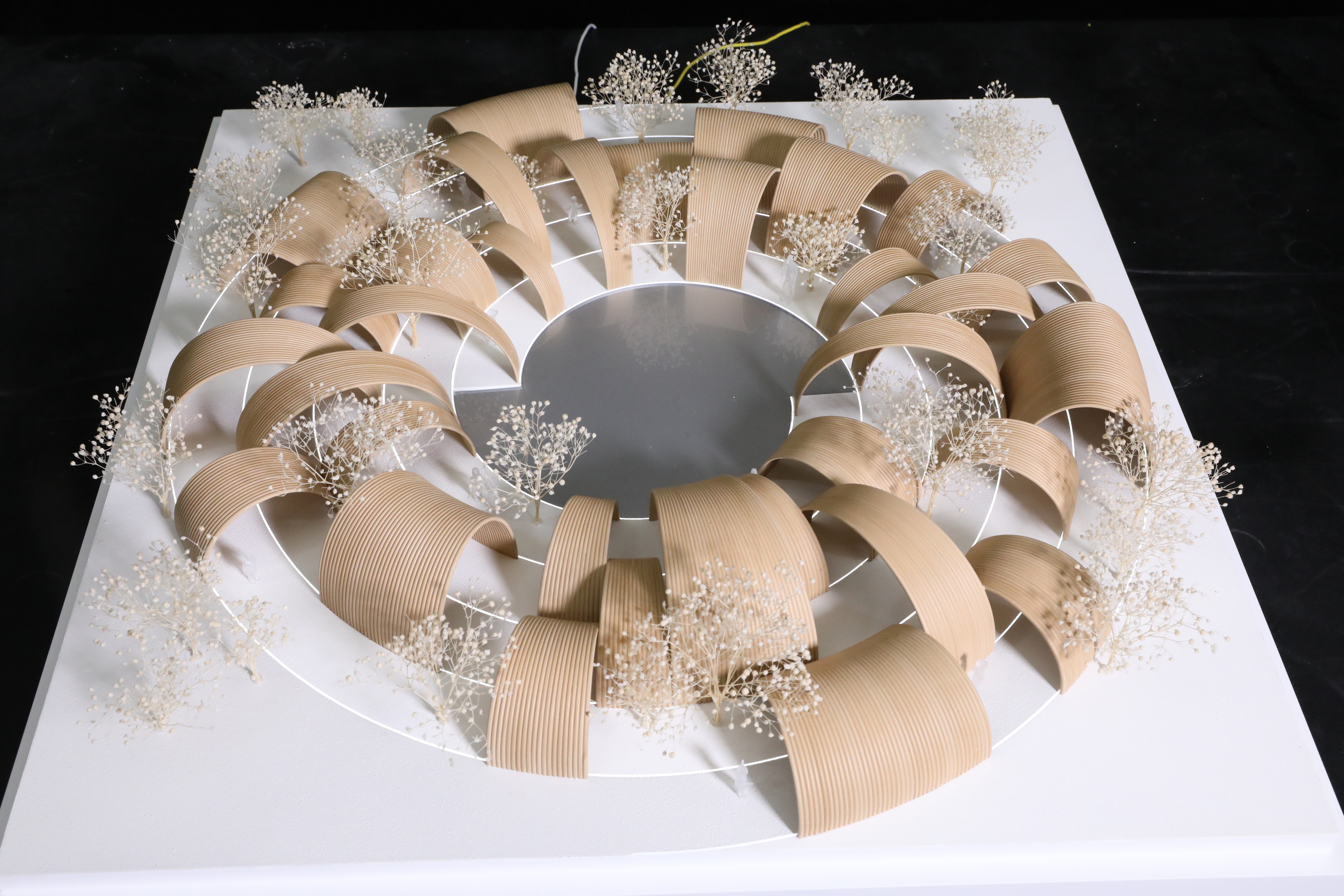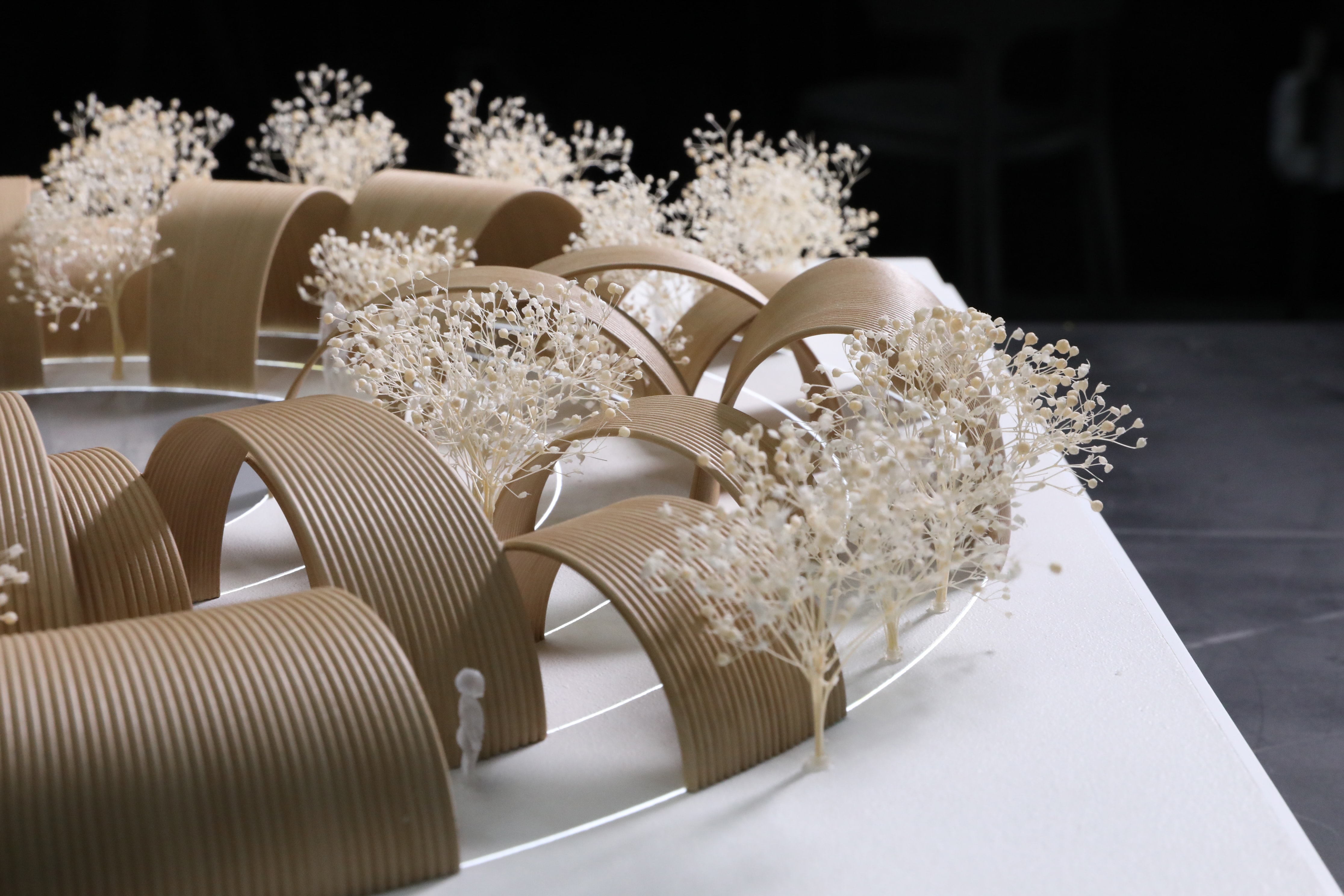In the Shunan Bamboo Forrest in Sichuan, China, there is a unique geological landscape called Gem Lakes, which are small blue ponds formed by underground water containing copper sulfate. The site is right by a small Gem Lake in a bamboo forest around the village. Our client wants to donate a community center to host a variety of local cultural events.
In this project, our theme is "a building disappears and nature reveals". Our primary strategy is to lead life into the natural field by hand-making the building in its original way. After a long discussion with our clients, we decided not to use any resources from outside the forest. Plenty of bamboo, pebbles from the river and natural water of the pond all become the materials of the house, so that the new structure fits in with the ecological system surrounding it.
Twin Archimedes spirals are applied in the plan with two paths, by which 36 bamboo arch units with different spans surround the center of twin spirals. These intersected arches generate a garden composed of light and shadows. Each arch is interwoven by bent fresh bamboo with local traditional crafts as both partition walls and roofs. This combination also creates a series of interconnected corridors, bringing more possibilities and interesting twists in forking paths.
On open days, children could play hide-and-seek games here; seniors might play chess and drink tea under the bamboo shade. On special occasions, artists can hold exhibitions along the arch gallery, and local craftsmen may teach ancient bamboo weaving skills in the workshops. Always, the site is the best place for camping in the forest. In the future, these bamboo arches can also be reassembled or recycled according to specific space requirements.
